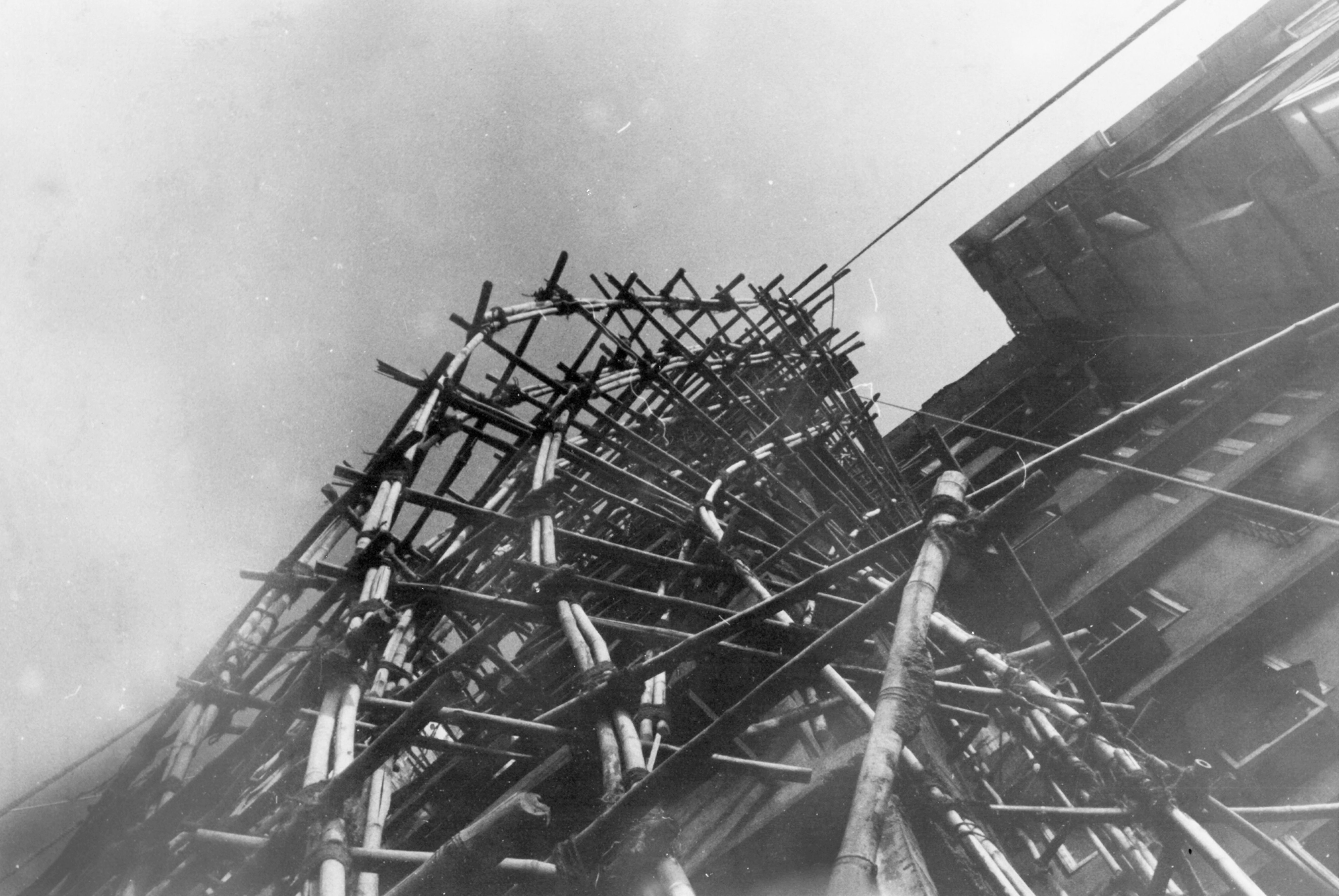Gro Harlem Brundtland, “Our Common Future: Report of the 1987 World Commission on Environment and Development” (Oslo: United Nations, 1987), ➝.
Panayiota Pyla, “Counter-Histories of Sustainability,” Volume 18 (December 7, 2008), ➝.
“Welcome to the IHBT Cyber World,” ➝. Also, the Council for Scientific and Industrial Research (CSIR) was a product of the early post-independence development project. The CSIR came into being in 1942 when the urgent need for supplies towards World War 2 revealed India’s shortfall of industrial commodities. The CSIR is an independent centrally funded body that has been crucial in setting the tone of scientific research in the post-World War 2 period. See Ateya Khorakiwala, “A Black Carpet of Bitumen; Public Works as Research, India c. 1960” (Unpublished).
Vikramaditya Prakash, The Architecture of Shivdatt Sharma (Ocean, NJ: Mapin Publishing Gp Pty Ltd, 2013).
Question answer session of a talk given by Anooradha Iyer Siddiqi entitled Dadaab: Architecture and History in a Refugee Camp, JJ College of Architecture, Mumbai, July 31, 2018.
Weiping Zhang and Lynn G. Clark, “Phylogeny and Classification of the Bambusoideae (Poaceae),” in Grasses: Systematics and Evolution: Systematics and Evolution, eds. S. W. L. Jacobs and J. Everett (Csiro Publishing, 2000), 35.
The immense cultural history of bamboo use in Asia is outside of the scope of this paper, but an overview of the uses of bamboo can be found in G. K. Ghosh, Bamboo: The Wonderful Grass (APH Publishing, 2008).
Anna Lowenhaupt Tsing, “On Nonscalability: The Living World Is Not Amenable to Precision-Nested Scales,” Common Knowledge 18, no. 3 (September 19, 2012): 505–524.
Charles Correa in Carmen Kagal, Vistara: The Architecture of India, Exhibition Catalogue, Festival of India in U.S.A. (Festival of India, 1986), 8–12.
Arindam Dutta, “Politics of Display: India 1886 and 1986,” Journal of Arts and Ideas 30–31 (1997): 115–145.
“Concrete Manufacture Handling and Control at the Bhakra Dam,” Indian Concrete Journal 31, no. 8 (August 15, 1957): 241–249.
A pandal is a combination of an awning of posts and cladding (for instance bamboo and cloth) made to create a temporary shelter, under which a large group of people can meet. Jawaharlal Nehru, The Essential Writings of Jawaharlal Nehru Volume 2, eds. S. Gopal and Uma Iyengar, vol. 2 (New Delhi: Oxford University Press, 2003), 720.
J. L. Saaz, “Nalgonda Prject; Breakthrough in a Rocky Tract,” Yojana 11, no. 22 (November 12, 1967).
While fifteen thousand people died in the 1881 thingtam, there are no good estimates of mortality for the corresponding 1910-1912 the mautam. See Sajal Nag, “Bamboo, Rats and Famines: Famine Relief and Perceptions of British Paternalism in the Mizo Hills (India),” Environment and History 5, no. 2 (1999): 245–252; and Ken Aplin and James Lalsiamliana, “Chronicle and Impacts If the 2005-09 Mautam in Mizoram,” in Rodent Outbreaks: Ecology and Impacts (International Rice Research Institute, 2010), 24.
Arthur J. Dommen, “Separatist Tendencies in Eastern India,” Asian Survey 7, no. 10 (1967): 726–739, ➝.
K. Sivaramakrishnan, “Colonialism and Forestry in India: Imagining the Past in Present Politics,” Comparative Studies in Society and History 37, no. 1 (1995): 3–40.
David Arnold, Science, Technology and Medicine in Colonial India (New York: Cambridge University Press, 2000), 148.
James C. Scott, Seeing like a State: How Certain Schemes to Improve the Human Condition Have Failed (New Haven: Yale University Press, 1999). 14.
Aparna Pallavi, “Forest Titles Only on Paper,” Down to Earth: Science and Environment Fortnightly, 2015, ➝.
Meredith Miller, “Views from the Plastisphere: A Preface to Post-Rock Architecture,” in Climates: Architecture and the Planetary Imaginary, eds. James Graham and Caitlin Blanchfield (New York, NY: Columbia Books on Architecture and the City, 2016), 67–78.
Arjun Appadurai, “Street Culture,” The India Magazine 8 (December, 1987): 2–23.
Dirk van den Heuvel, “Cross-Pollination in the Doshi Habitat - A Report from Ahmedabad,” DASH 12/13, 2015.
Namita Dharia, “Introduction to The Industrial Ephemeral,” in Aesthetics, Power, and Political Economy in Modern South Asia (47th Annual Conference on South Asia, Madison, Wisconsin, 2018).
